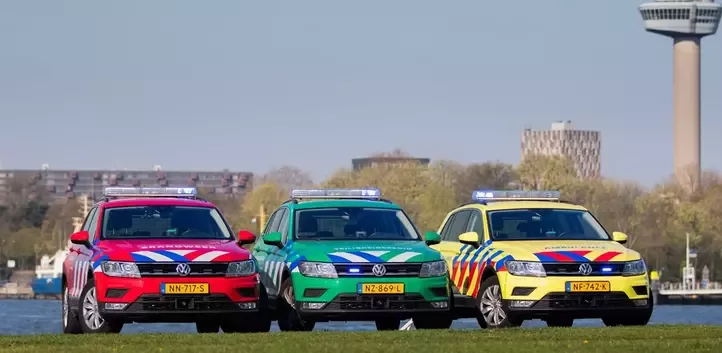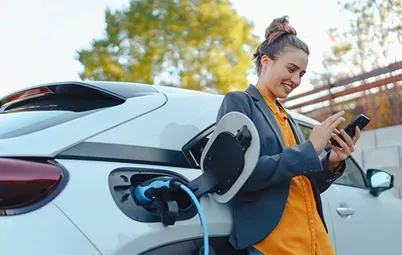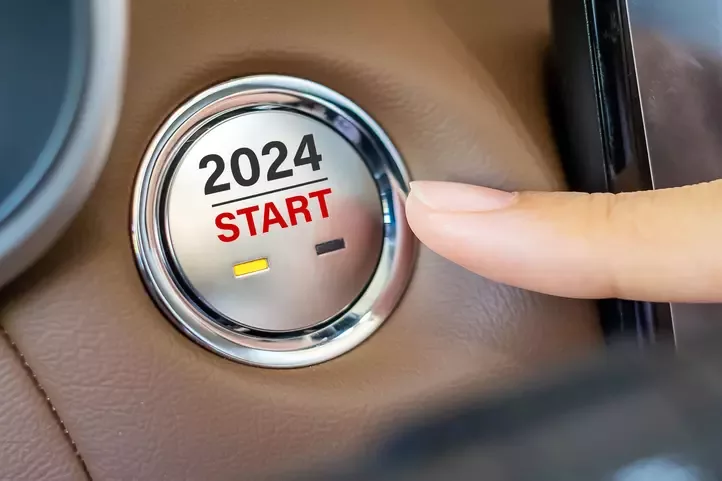Here are the 11 most important mobility developments for 2024

Just like every other year, plenty of things will be changing in commercial mobility in 2024. Fortunately, quite a few things will remain as they were. We have listed the most important mobility developments for this year and the next for you.
#1 Addition rules remain unchanged
The addition rules for company cars have been constantly changing in recent years and will continue to change in the years to come. In that respect, 2024 is a special year, as nothing at all will change. As in 2023, company car drivers will benefit from an additional tax rate of 16% on the first €30,000 of the list value of their car. You pay 22% on every euro above that limit. Does your car have a fuel engine on board? Then the addition rate is 22% on the entire list value. Under current plans, the tax benefits for electric cars will be a thing of the past by 2026.
| EVs | 2023 | 2024 | 2025 | 2026 |
| Addition | 16% | 16% | 17% | 22% |
| Addition limit | € 30,000 | € 30,000 | € 30,000 | n/a |
#2 Electric cars are still not subject to motor vehicle tax (mrb)
Those driving an all-electric car will not owe motor vehicle tax (mrb). This quickly saves many hundreds of euros on an annual basis. This exemption for EV drivers also applies in 2024. In 2025, however, it does seem that mrb will apply to electric cars. For now, there is talk of a 'quarter rate', with a 75% discount on the regular motor vehicle tax. By 2026, the 'road tax' exemption should then be a thing of the past, which means EV drivers must also pay the full rate. However, these plans for 2025 and 2026 are not yet final. Plug-in hybrids are subject to a half-rate in 2024 (50% discount), and a three-quarter rate (25% discount) is expected in 2025.
#3 BPM exemption for entrepreneurs disappears
In 2025 – if current plans go ahead – the exemption from bpm (Tax on Passenger Cars and Motorcycles) for vans will be abolished. That means entrepreneurs will have to pay purchase tax for their new van. However, this does not apply to all-electric vans. To boost sales of those zero-emission vehicles, entrepreneurs still do not have to pay bpm for those grey license plates.
#4 Fuel-driven commercial vehicles are no longer allowed to enter the inner city
On 1 January 2025, the inner cities of many major Dutch municipalities will turn into so-called zero emission zones. That means only electric vans will be allowed to enter that zone. By the way, municipalities get to decide how big these zero emission zones will be, so the areas can vary from a few streets to the entire city centre. Also, 1 January 2025 is not a fixed date. After all, there is a transitional arrangement. Commercial vehicles with emission class euro 5 will still be allowed to enter inner cities until 2027, and vans with a euro 6 label until 2028. Still, the government is sending a clear message to entrepreneurs: electrify!
#5 Large driving licence requirement for grey licence plates continues
Entrepreneurs already making the switch to electric vans face a major hurdle: due to the heavy battery pack, the larger vans often weigh more than 3,500 kg. This means that the regular B licence (for driving passenger cars) is not sufficient. In short, the C licence is required. For a while, it was hoped that there would be a partial exemption for the large driving licence, but that will not be the case. From 1 January 2024, the C driving licence will be compulsory for electric commercial vehicles weighing between 3,501 and 4,250 kilos, with enforcement starting from 1 July 2024.
#6 Zero Emission Commercial Vehicles (SEBA) subsidy scheme only starts in spring
The subsidy scheme for the purchase of zero-emission commercial vehicles, the SEBA, will start in 2024 not on 1 January as usual, but at the end of March. The reason for the delay is the recent House of Representatives election. The Ministry of Infrastructure and Water Management's budget for 2024 will be dealt with later as a result. The SEBA provides a subsidy of up to €5,000. The SEBA will not return in 2025. In 2024, the SEBA scheme will be in place until the allocated budget runs out.
#7 Discount on fuel tax remains
Although the cabinet wanted to abolish the fuel tax discount by 2024, the House of Representatives has decided that the discount will remain. In short, petrol and diesel will not become 21 and 13.5 euro cents more expensive per litre this year as envisaged. Fuel tax will be frozen this year only for now. The main reason for maintaining the discount is that driving a car would otherwise become unaffordable for people with a small budget.
#8 Tax-free travel allowance to increase further
In 2024, the maximum tax-free travel allowance will rise from €0.21 to €0.23 per kilometre. Last year, the tax-free travel allowance also increased by €0.02 compared to the previous year. The tax-free travel allowance applies to commuting and business trips.
#9 CO2 reporting obligation: how do your employees travel?
For companies with 100 or more employees, a CO2 reporting obligation for work-related personal mobility will apply from 1 July 2024. As the name suggests, such a company is required to report annually on its business travel and the commuting of its employees. For example, they must keep track of and report to the Netherlands Enterprise Agency (RVO) how many car kilometres have been travelled, broken down by fuel type. With the reporting obligation, the government aims to reduce CO2 emissions.
#10 Remote working allowance to increase
As an employer, you may compensate employees who work from home. Your employee does not pay tax on that remote working allowance. The remote working allowance went up from €2.00 per day to €2.15 last year. This year, the remote working allowance will increase further to €2.35 per day.
#11 Easing of rules for employer-provided public transport card
From 1 January 2024, it will be fiscally and administratively easier for you as an employer to offer public transport subscriptions to employees that they can also use privately. There are now three ways in which you can offer public transport to employees. The first way is to make it available. As the employer, you pay for the public transport card and the card remains the property of the company. The second way is provision. You pay, but your employee owns the card. The third way is reimbursement. The employee pays and also owns the public card.







